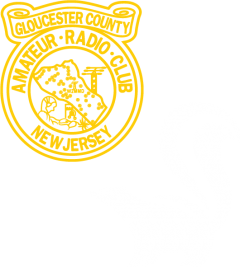In an earlier blog post we described the process of implementing our first version of the GOES16 receiver. That system worked well for about a year until we decided to install a new tower at the GCARC clubhouse that was dedicated to Skunkworks projects. That meant taking down the GOES system and reinstalling it on the tower – a project that appeared to be straightforward but in reality took several weeks to make work.
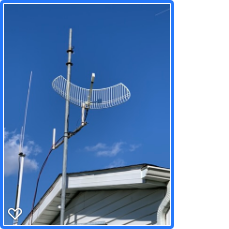
After installing the new tower the GOES antenna was initially mounted on a tower leg about 6 feet from the ground which gave it a clear view of the satellite while still being easily accessible for final aiming and debugging. Unfortunately that positioning resulted in Viterbi scores greater than 1000, meaning that images could not be decoded. Pulling down the antenna and testing on a tripod gave better results but when mounted on the tower the Viberti scores zoomed upwards. We tried carefully re-aiming the antenna, moving the SDR receiver to connect directly to the antenna, using a high-quality custom-build GOES preamplifier – and nothing worked.
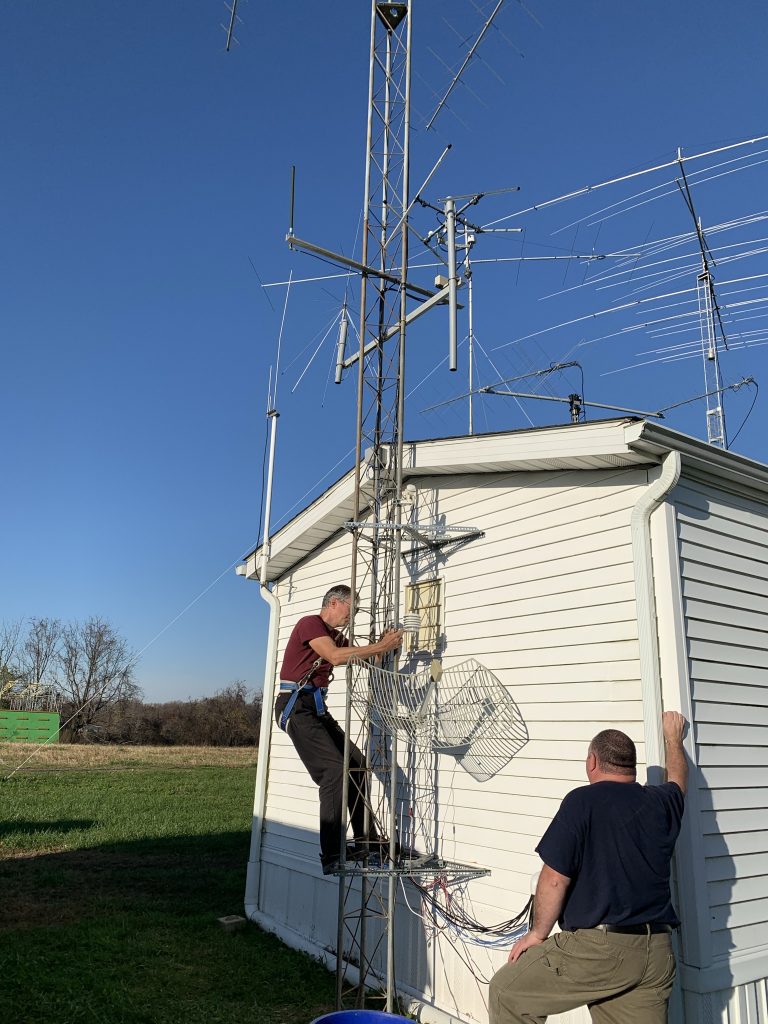
Initial GOES antenna mounting 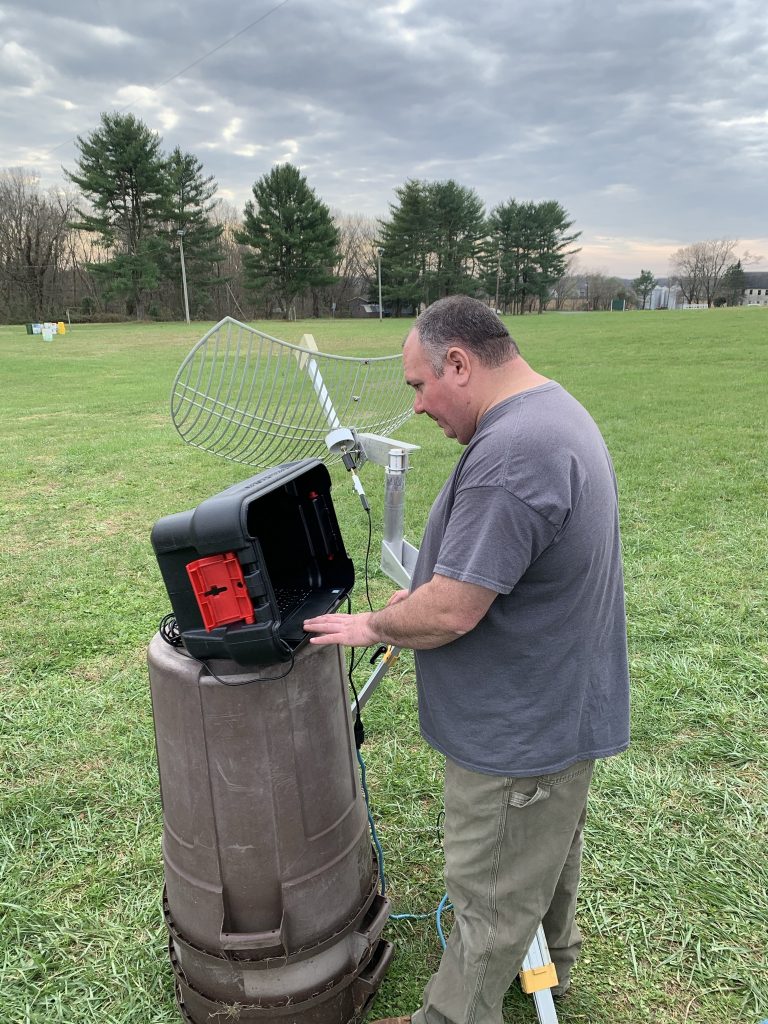
Field testing GOES signals
Finally Frank N3PUU refocused the project by noting that the critical factor in GOES reception was the signal-to-noise ratio and that we should focus on noise, not just signal. Connecting the GOES SDR radio to a laptop and shutting down everything else in the Clubhouse we found that the Viterbi scores had dropped to the 100-200 level (lower scores are better) which meant that images were easily being copied. Our problem was obviously noise, not signal. so somewhere in the satellite station (which is located on the wall opposite the GOES antenna) was a significant 1.7 ghz noise source.
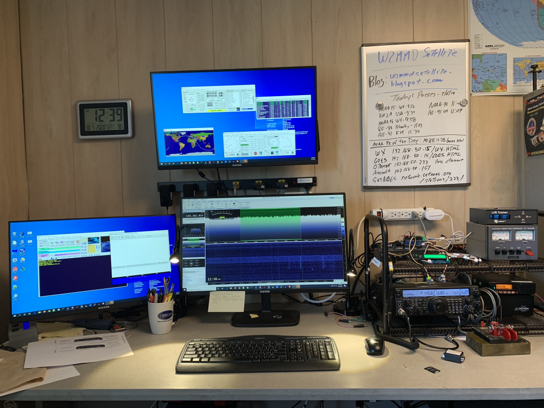
Using a makeshift antenna and tuning the SDR radio on the laptop to 1.7 ghz we started moving around in the clubhouse incrementally turning on devices and observing the resulting noise. Turning on one of the three monitors significantly increased the noise; turning on all three blanked the GOES signal completely. Obviously the monitors were creating so much noise that it covered the GOES satellite signal.
We had identified the problem – now we needed a solution. Since the Clubhouse is unoccupied (with the monitors turned off) most of the time the monitor noise would only be an issue when we were there, but we still wanted to fix it. Covering the back of one of the monitors with aluminum foil created a slight decrease in the noise, but the ultimate answer was to raise the GOES antenna several feet on the tower.
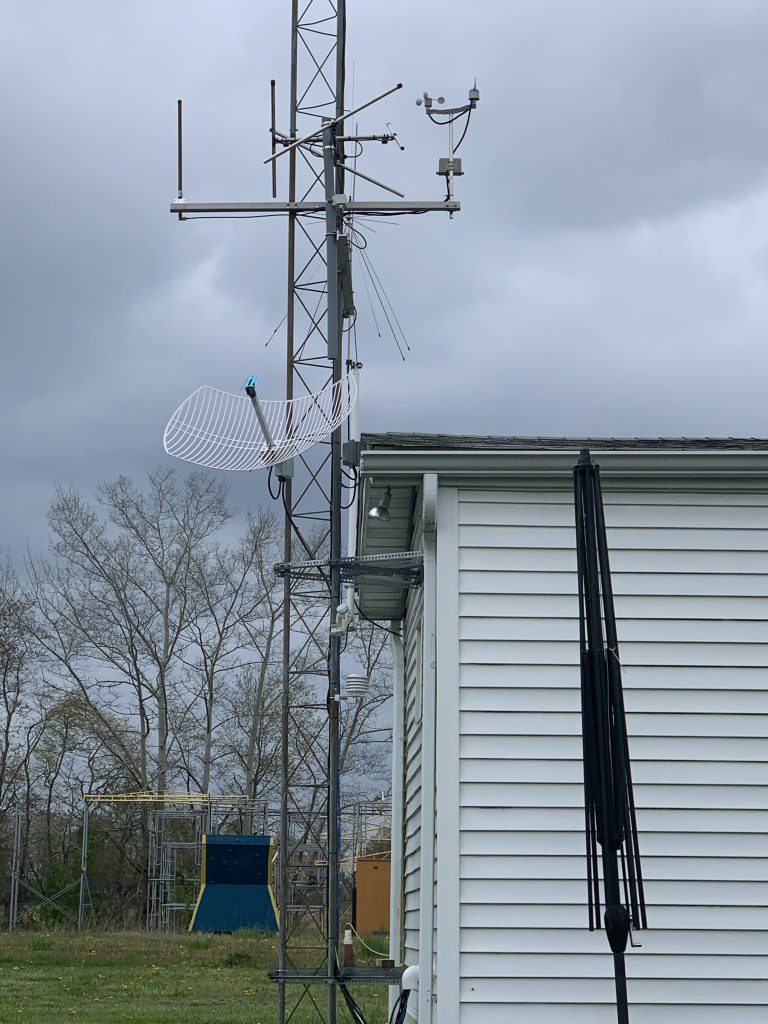
In that location we can run the monitors in the clubhouse, and while the Viterbi scores jumped to the 400-500 range the Reed-Soloman error correction kicked in and kept the images readable. The Grafana dashboard below shows the statistics while the monitors were turned on from about 11:45 through 13:20 – the Viterbi scores increased from their normal 100-150 range up to about 500 , the RX gain dropped at that time and the RS error correction kicked in. However, the RX packet count remained stable and the number of dropped packet didn’t significantly increase over its usual value.
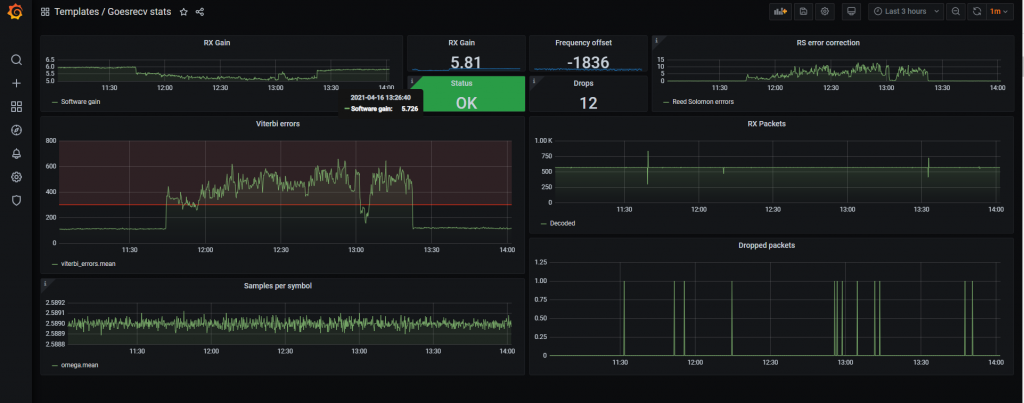
While we were attempting to solve the GOES reception problem Nooelec released its combination GOES reception bundle on Amazon, which we purchased and ended up using. The Nooelec antenna was slightly better tuned to the GOES16 frequency and while we were already using the SAW preamp with an AirSpy SDR receiver we found that the preamp/SDR packaged with the Nooelec bundle worked quite well.
Working at microwave frequencies it’s important to keep feedlines as short as possible, so we mounted the Nooelec preamp in a waterproof case with glands for the cable connections and mounted that case on the antenna bracket. The preamp is powered by bias-tee from the SDR receiver. Because the SDR receiver and preamp are powered by the USB connection to the Raspberry Pi it’s important to provide sufficient power to the Pi. Small 2-amp supplies may not be sufficient – we initially used a 3A supply until we located the GOES Pi in the projects case with the 8 amp 5 volt power supplies.
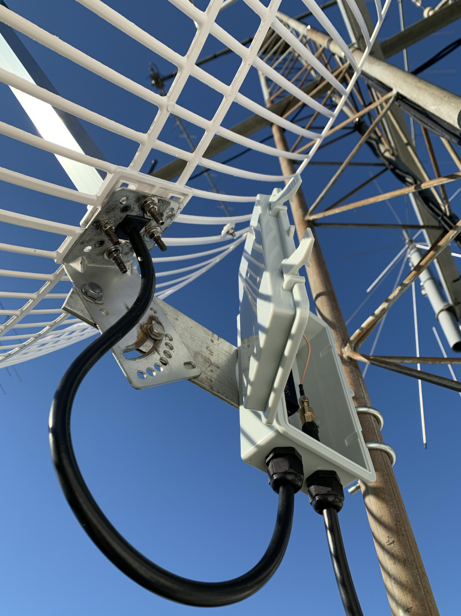
Preamp mount at antenna 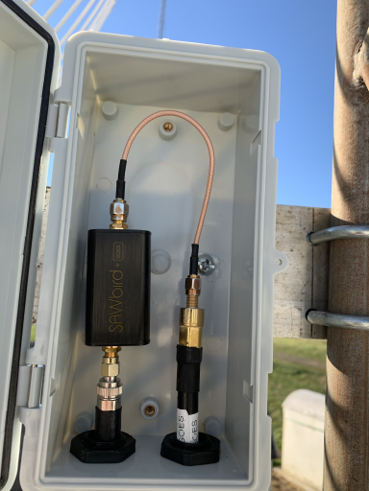
Preamp waterproof box
The coax run from the preamp to the SDR receiver is made with the original cable included in the Nooelec kit, which is about 30 feet. With the preamp installed there’s enough signal at the SDR end of the cable for reliable reception.
